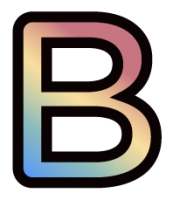The Wonders of Human Facial Recognition (Part 2)
I’ve been working with biometric identification technology for over a decade and I’ve always thought biometric technology was interesting. When I started learning about facial recognition algorithms, it made me appreciate the amazing skill of human face recognition even more. We learn to do this amazingly complex task as babies, so we don’t appreciate it as much as we should. I wrote about that here.
We all have so many misconceptions about how we see faces. It’s something we can all do to different degrees without ever having been taught. But have you ever really thought about how you recognize a face? If you see a person that you know, can you describe to someone else how you know? Could you teach another person to recognize that person?
Here’s an example:
You are very likely to see the first image and recognize the face of President Barack Obama. The chance of you recognizing that face is higher if you live in North America, because familiarity and context matters. The kinds of faces you saw as you grew up are the kinds of faces your brain is best at identifying. Practice makes perfect.
You are likely to also recognize the second image as the face of President Barack Obama. But how? The two images look nothing alike. The famous “Hope” poster uses only 4 colors and in the poster Obama’s face is a strange combination of red, white, and blue that isn’t realistic at all. But somehow, your brain will look at both images and determine they are the same person. That’s amazing!
So what about this third image? That’s President Obama, right? Well, no. That’s a photograph of Reggie Brown, a professional Barack Obama impersonator. This is a great example of how we don’t see with our eyes. We see with our brain and our brain uses the visual information from your eyes plus context learned from your entire lifetime of experiences and whole lot of other stuff to “see” the world. The podium with the Presidential seal, the US flag pin on his lapel, navy suit with a plain tie, these are all cues being used deliberately to trick your brain into “seeing” Barack Obama.
The fourth image is a professional headshot of Reggie Brown. Now you can tell these aren’t the same person, even though the foreheads are both the same general size and shape. People are good at recognizing the faces of the people they know and see often, like celebrities. People are surprisingly bad at recognizing the faces of strangers.


